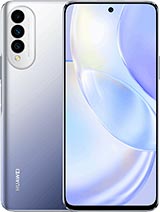Stop Charging Your Phone at Night, Here's Why By BRIGHT SIDE
Your smartphone is effectively an mp3 player, portable gaming console, TV, and netbook all in one small package. No wonder it needs a ton of energy to power up; so its battery better be good. What can we do to make it last? Certainly not charge it all night long. It’s a basic thing – you want your phone fully charged in the morning so it’ll last through the entire day away from the comfort of your home. Been there, done that. And even with cutting-edge smartphones that can charge to max capacity in a matter of an hour, there’s no guarantee that you’ll remember to charge it in the morning while you’re in a sleepy daze.
Advice to leave your phone unplugged during the night may seem risky and counterintuitive. The worst fear here is that your phone will charge down while you sleep and won’t see the dawn of a new day to wake you up like you’re used to. Frankly, it sounds like a horror story to me. But still, you can’t go against the word of science. Leaving your smartphone on a charger is bad for it.
It’s bad for the battery’s lifespan. Most modern devices use lithium-based batteries. Even though they’re rechargeable by nature, and made with this process in mind, they’re highly vulnerable to constant interactions with high voltage electricity, like in the outlets of your house. Just imagine, if you’re leaving your phone on a charger overnight every night for a year, it’ll spend more than 3 months total in contact with raw electricity. This amount of stress on a battery will inevitably diminish its capacity.
You’d be lucky if your smartphone lasted for a little over a year in this case. Thankfully, it’s not all that bad, because manufacturers know about this issue and try their best to avoid the damage. For example, there are automatic switches on your phone that’ll stop the charging process the very moment it reaches 100%. It seems like that would solve the whole problem, but it’s not that easy. You see, when your phone naturally goes down to 99%, the charging will start all over again.
Your phone goes from 99 to 100 % charged, and back, many times during just one night, and this too can degrade the battery. Another thing you might take notice of is your phone charger. I know, they seem to be simple tiny plastic gimmicks to convert energy from an outlet to a USB plug. But if you pay close attention in a tech shop, you’ll notice some of them cost a bit more than others. Good, high-quality chargers have special chips in them that prevent overcharging.
So it’s advisable not to skimp on chargers – this way you won’t spend much more money on a new battery or entire smartphone too soon. And what about charging cables? They’re also not just pieces of wire, you know! Cheap cables aren’t compatible with features like a Quick Charge, which is available on most modern devices in some form. But in some cases, it’s worse than that: a poorly manufactured cable could cause a short, and then your smartphone would be fried on a whim. Oh, My order? Yes, I’d like fried smartphone, some fries with that, and a diet cola please… Overall, it’s always advisable to use good quality tech when it comes to something as expensive as smartphones these days. But even all these reinforcements combined can’t completely protect your smartphone and allow you to charge it for as long as you want.
These small charges and discharges between 99% and 100% will still occur, and the problem with them is that they’ll heat up your phone. Heat is bad for batteries. That’s why it’s so harmful for your phone if you leave it in a closed car in the middle of summer. It’ll be all laggy and slow until you cool it down. A battery left on the charge may produce heat, but from the inside of the phone’s body, which is arguably even more destructive in the long term.
You can always ease this detrimental process by taking your device out of the phone case when you’re charging it, but that won’t completely solve the problem. There’s also some other advice going around the internet that I’ll have to disprove as myths, and nothing more. For example, you’ve probably heard something about fully depleting the charge of your smartphone and then charging it to the maximum capacity. For the present-day, this advice is almost completely obsolete. This is fair for devices from the past decade, because they were using a different kind of batteries, which were based on cadmium instead of lithium.
These batteries had a real problem with memory. Not that kind of memory. It was more like the amount of charge was memorized by the battery. If it was charged to 30% regularly, it’d be easy to get it to that amount, but hard to charge beyond it. Have you ever gotten so lazy you can’t even eat? Are you kidding? Well, that’s kinda what was happening to those batteries.
This effect was also called a lazy battery effect – clever name, ya think? Any modern lithium-ion battery won’t get lazy like a cadmium based one, so you don’t have to worry about that. As is the case with the notion that the first charge should be a longer one – this is about cadmium batteries too, and based on the same problem I just mentioned. For a long time, there was little to no major breakthroughs in the ways we power our devices. At least no sensible progress. The power of batteries grew to accommodate our devices, which needed more and more power; but the sizes have decreased, leaving less space to hold the battery.
So the advances in engineering new ways to manufacture batteries haven’t stopped. Scientists and engineers promise that soon, we’ll have another kind of lithium-based battery that’ll be able to charge in a matter of minutes and last for more than one day. And that’s not the most insane new idea on the list. Can you predict what it might be? Tell me about the battery of your dreams in the comments. But now let’s move on.
As you already know, wireless charging is a thing now, but it seems like scientists are ready to push it a step further. One of their new ideas is to make battery chargers that can produce energy from a Wi-Fi signal. The very thing that was making us spend the charge of our smartphones, will also charge them in the future! And how about charging a phone with a sound? Using piezoelectric principals, tiny nanogenerators will be able to transform the surrounding sound to electric power. Even your own voice will be a good source of energy – charging a phone while talking on it? Yes, please! Guess that’d be good news for service providers, huh. Scientists from Japan are in the middle of a decades-long study that will allow replacing lithium ion batteries with sodium.
The main difference between those elements is that lithium is quite rare and expensive, while sodium is literally everywhere. It’s one of the most wide-spread elements on Earth! And batteries like that wouldn’t only be more efficient, but also cheaper. Another idea is to use literal sand in batteries. Not quite literal though, as this battery will use silicon – the main component of the sand. Thinned down into nano-silicon structures, this element will be much more efficient in a battery than the graphite that’s used now.
And now to more expensive stuff: how about gold batteries? No, actually it’s nanotubes made of gold in batteries, where energy transfers through the gel will be so sturdy that the battery won’t ever degrade at all. With a battery like this one, you’d be able to charge your phone however and for as long as you like. But for now, the best course of action is to use good quality charging equipment, keep your smartphone out of the heat, and most importantly, keep the charge in it between 30% and 90%. Don’t starve it and don’t overcharge it, and your smartphone will serve you for years to come. Or until the new whiz-bang model that you just have to have comes out! Hey, if you learned something new today, then give the video a like and share it with a friend! And here are some other cool videos I think you'll enjoy.
Just click to the left or right, and stay on the Bright Side of life!.
Source : BRIGHT SIDE



























